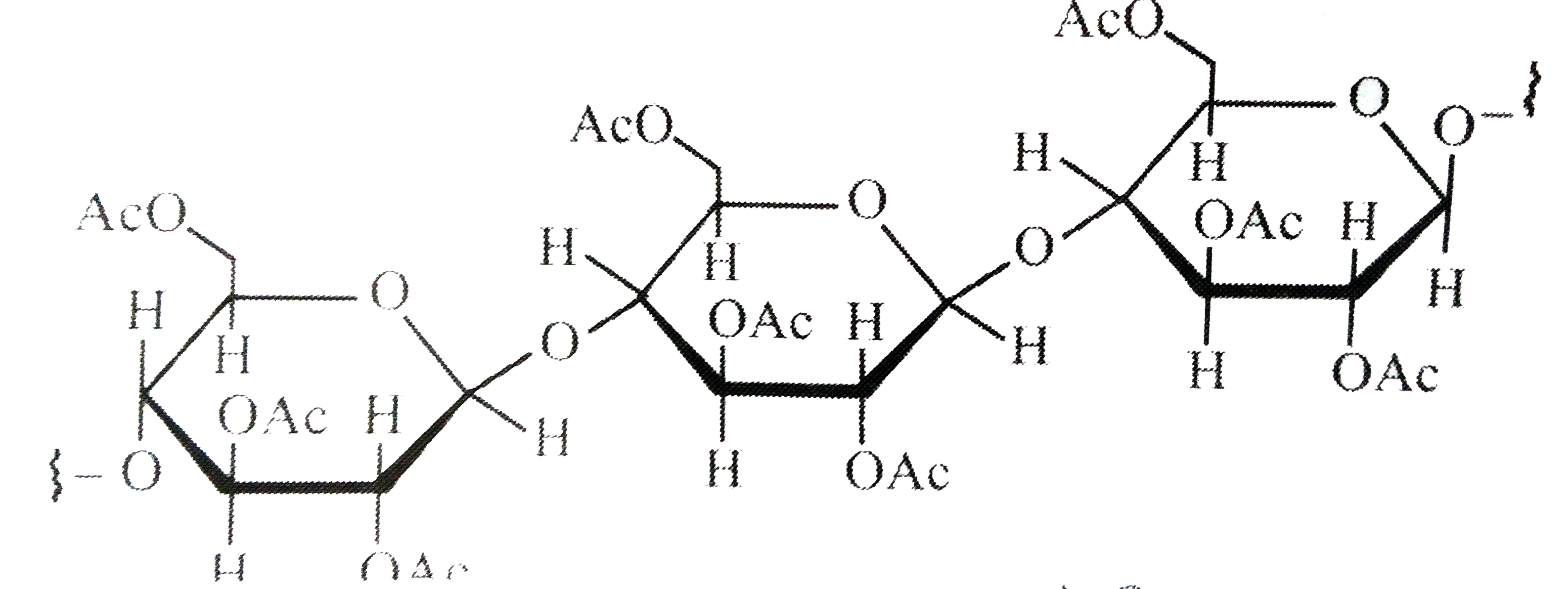Acetylation of glucose with acetic anhydride gives
Glucose hexaacetate
Glucose pentaacetate
Glucose butaacetate
Glucose diacetate
The correct Answer is:B
To solve the question regarding the acetylation of glucose with acetic anhydride, we can follow these steps:
Step 1: Understand the Reactants
- Glucose is a six-carbon sugar with multiple hydroxyl (–OH) groups.
- Acetic anhydride is a reagent used to introduce acetyl groups (–COCH3) into organic molecules.
Step 2: Identify the Reaction
- Acetylation involves the reaction of glucose with acetic anhydride. Each hydroxyl group on glucose can react with an acetyl group from acetic anhydride.
Step 3: Determine the Number of Hydroxyl Groups
- Glucose has five hydroxyl groups (–OH) that can be acetylated. The structure of glucose is:
- C1: Aldehyde group (–CHO)
- C2 to C5: Hydroxyl groups (–OH)
- C6: Methyl group (–CH2OH)
Step 4: Calculate the Possible Acetylation Products
- Since glucose has five hydroxyl groups, it can theoretically be fully acetylated to form glucose pentaacetate, where all five –OH groups are replaced by –OCOCH3 groups.
Step 5: Write the Product Structure
- The product of the complete acetylation of glucose would be glucose pentaacetate, which can be represented as:
- C1: Acetyl group (–COCH3)
- C2 to C5: Acetyl groups (–COCH3)
- C6: Acetyl group (–COCH3)
Step 6: Identify the Correct Answer
- The correct answer to the question is B. glucose pentaacetate, as it is the product formed when all five hydroxyl groups of glucose are acetylated.
Final Answer:
- Acetylation of glucose with acetic anhydride gives glucose pentaacetate.
---
- Glucose is a six-carbon sugar with multiple hydroxyl (–OH) groups.
- Acetic anhydride is a reagent used to introduce acetyl groups (–COCH3) into organic molecules.
- Acetylation involves the reaction of glucose with acetic anhydride. Each hydroxyl group on glucose can react with an acetyl group from acetic anhydride.
- Glucose has five hydroxyl groups (–OH) that can be acetylated. The structure of glucose is:
- C1: Aldehyde group (–CHO)
- C2 to C5: Hydroxyl groups (–OH)
- C6: Methyl group (–CH2OH)
- Since glucose has five hydroxyl groups, it can theoretically be fully acetylated to form glucose pentaacetate, where all five –OH groups are replaced by –OCOCH3 groups.
- The product of the complete acetylation of glucose would be glucose pentaacetate, which can be represented as:
- C1: Acetyl group (–COCH3)
- C2 to C5: Acetyl groups (–COCH3)
- C6: Acetyl group (–COCH3)
- The correct answer to the question is B. glucose pentaacetate, as it is the product formed when all five hydroxyl groups of glucose are acetylated.
- Acetylation of glucose with acetic anhydride gives glucose pentaacetate.
Topper's Solved these Questions
Similar Questions
Knowledge Check
Glucose reacts with acetic anhydride to form
A3B5C4D1Cellulose upon acetylation with excess acetic anhydride/H2SO4 (catalytic) gives cellulose triacetate whose structure is
A B
B C
C D
D
Ethanol reacts with acetic anhydride to give :
View SolutionAssertion : Acetanilide is less basic than aniline .
Reason : Acetanilide is formed by reaction of aniline with acetic anhydride .
View SolutionA compound with molecular formula C6H10O4 on acylation with acetic anhydride gives a compound with molecular formula C12H18O8. How many hydroxyl groups are present in the compound?
View SolutionAniline is an activated system for electrophilic substitution The compounds formed on heating aniline with acetic anhydride is .
View SolutionGlucose reacts wih acetic anhydride to form:
View SolutionWhich one of the following compound gives aspirin on reacting with acetic anhydride in presence of H2SO4
View Solution
